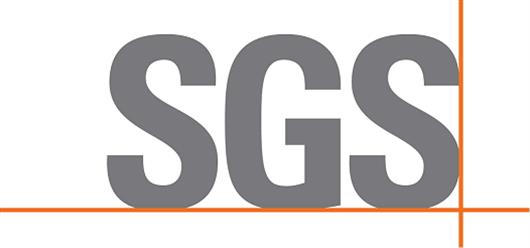 Add My Company
Add My Company
Sign In

(LONDON, UNITED KINGDOM, 22 MAY 2014) The latest stage in the ISO 9001 revision process arrived with the issue of ISO/DIS 9001 on 8 May 2014. This first formal draft describes the potential requirements of the revised version of ISO 9001; this is not the final version. However, it does at least give an indication on what might be included and we need to be aware of its content. Further changes are, of course, possible before final publication of ISO 9001:2015 currently scheduled to be released in Q4 2015.
The main areas of changes proposed in ISO/DIS 9001 are:
1. Structure and terminology, including incorporation of Annex SL framework;
2. The wider internal and external context of a organisation’s Quality Management Systems (QMS) (Clauses 4 and 6);
3. Detailed Quality Management System (QMS) requirements’ (broadly clauses 5 & 7 – 10).
1. Structure and Terminology: DIS adopts Annex SL, notable changes in terminology
ISO/DIS 9001 adopts the clause structure specified in Annex SL which is now the required framework for all new and revised ISO Standards. The stated reason for this is to ensure that the final version of ISO 9001 is aligned with other management systems standards. Utilizing the Annex SL structure will present QMS requirements in a more consistent, rational manner and not simply offer a template for elements of an organisation’s QMS.
ISO/DIS 9001 contains some notable changes in the terminology used in
ISO 9001:2008 ISO 9001:2015 (DIS version)
‘Products’ ‘Products and services’
‘Documentation’ ‘Records’ 'Documented information’
‘Work environment’ 'Environment for the operation of processes’
‘Purchased product’ 'Externally provided products and services’
‘Supplier’ ‘External provider’
In addition, there would no longer be any requirement to identify any ‘Exclusions’, i.e. QMS requirements that could not be applied due to the nature of the organisations business (clause 1.2 in ISO 9001:2008).
2. Organizational Context: Quality Management Systems to be more externally oriented
ISO/ DIS 9001 requires any organisation establishing a QMS to determine relevant internal and external issues, understand the need and expectations of interested parties, specify the scope of applicability of the Quality System and consider these aspects together in order to properly understand the opportunities and risks they represent.
The proposed change in methodology requires a move away from a purely inward-focusing approach to QMS development and implementation to one where external or ‘outside’ factors have a greater influence on the way in which the QMS is focussed and prioritised; to be as effective as possible in meeting key internal and external objectives. An organization seeking to implement a QMS would need to determine the interested parties relevant to its QMS and their requirements.
Closely aligned to the context of an organization is the adoption of a risk-based approach when developing and implementing its QMS. An organisation would have to identify the risks and opportunities that need to be addressed to ensure that the QMS can achieve its intended outcome(s) including those relevant to or determined by its organizational context. The organization would have to plan actions to address these risks and opportunities, integrate and implement them into its QMS processes and evaluate the effectiveness of these actions.
3. Numerous changes to QMS Requirements
Besides the adoption of a risk-based approach, there are a few other new requirements:
Any organization implementing a QMS would have to identify the competence necessary for personnel doing work that affects its quality performance, as well as ensuring that those personnel are competent to do so.
There remains a requirement to identify and maintain the knowledge needed to ensure that it can achieve conformity of products and services.
‘Preventive action’ is no longer a specific clause in ISO/ DIS 9001 as it is a primary objective of a QMS in addition the risk-based approach.
ISO/ DIS 9001 more directly expects organisations to apply a process approach when planning, implementing and developing their QMS. The version also includes a list of requirements identifying the essential elements of such an approach. The intention is to ensure that organisations systematically define and manage not just their processes, but also the interaction between them.
How can SGS help?
SGS can provide awareness training to help our prospects and clients understand the requirements of ISO/ DIS 9001. We will also publish a white paper about the subject during Q3 2014. A checklist will be developed to be able to offer gap assessments against the requirements of ISO/ DIS 9001. An overview on Annex SL can be found on www.sgs.com/ISO9001. A training course related to risk-based thinking will also be made available by June.
Future updates
A copy of the ISO/DIS 9001 standard can be purchased http://www.iso.org/iso/home/store/catalogue_tc/catalogue_detail.htm?csnumber=62085.
The official ISO 9001:2015 working group (ISO/TC 176/SC 2) responsible for the development and publishing of the ISO 9001:2015 standard will develop a matrix showing a correlation between the clauses of ISO9001:2008 and ISO/DIS 9001:2015, which will be available shortly at www.iso.org/tc176/sc02/public.
Further information and updates on the development of ISO 9001:2015 and its publication schedule will be issued by SGS as they become available.
For more information on ISO 9001: 2015 UPDATE – ISO/DIS 9001 ENCOURAGES MORE EXTERNAL FOCUS IN QUALITY MANAGEMENT AS PART OF RISK-BASED APPROACH talk to SGS United Kingdom Ltd
Enquire Now
More News
List your company on FindTheNeedle.